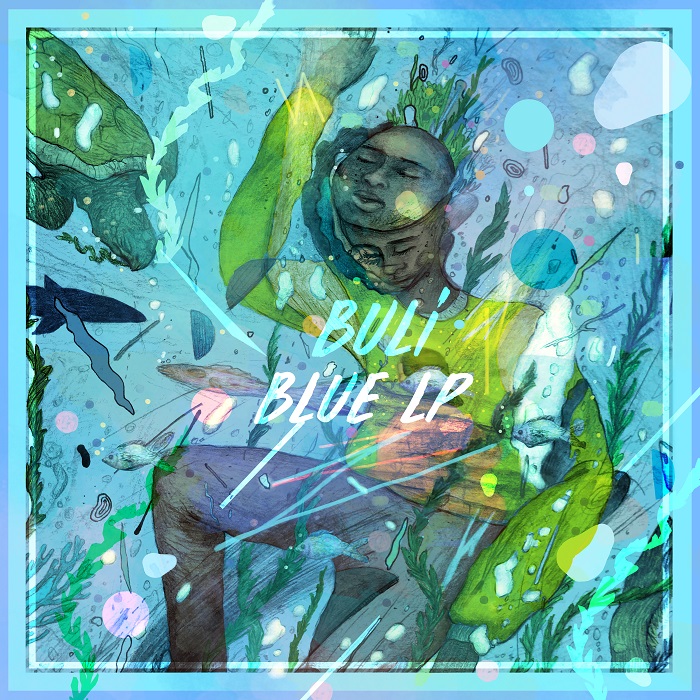Last year saw the release of the Keleketla! project, a collaborative microcosm orchestrated by legendary Coldcut where contemporary South African musicians and international artists released a unique and memorable album. At the heart of this spontaneous process of residencies, studio recordings, and virtual exchanges was the artist who brought this adventure to a close by delivering a magnificent album cover to showcase the project. “The artwork represents people gathering in a circle around a fire which grows like a tree and its ramifications. It is a beautiful symbol that represents the process“, said Matt Black and Jo Moore in an interview about the project. Deeply inspired by the concept – based on one of his previous paintings that caught their eye – Lisolomzi Pikoli agrees: “I was thinking about this cross-continental collaboration and the momentum it had created, propelled by all the different souls/people involved. So the idea of people dancing around a bonfire of lives and enjoying the festival sounds came about.”

Dancing on a canvas
While the actors of the Keleketla! library have, since 2013, become mentors and have played a significant role in Lisolomzi’s artistic development, working with these behemoths of DIY electronic music remains a special moment: “I have been listening to Coldcut and Ninja Tunes since my high school days, it was a great honour to get to work on their album cover featuring so many brilliant musicians from South Africa and around the world.” Looking back, it was not the young painter’s first music-related collaboration. South African jazzman Vuma Levin, seduced by Lisolomzi’s work, was the first musician to express his wish to use the artist’s work to illustrate three of his releases. “I was actually really lucky with Vuma as he had seen some artworks that I had created and so commissioned them as his album covers,” he says, still sounding surprised. “It was an amazing experience to work with one of South Africa’s greatest jazz talents for a few of his releases.” On closer inspection, the work on shapes, lines, colours and emotions naturally echo a melody or song lyrics in a musician’s mind.
In this respect, the drawings chosen by South African artist Buli – especially on the LP Blue – curiously reflect the pure and ethereal textures of his music. “His work always felt like a match for my music because it inspires me to make shit to fit his visual aesthetic,” the beatmaker tells us, “I knew he would be the perfect person to do this floaty and abstract cover for Blue”. On the other side of the mirror, Lisolomzi admits to listening and appreciating the music of his clients when using his brush: “music is a part of me and helps me flow as I create, it has always played during my painting sessions.” This is just one of the young man’s many influences. He always keeps his senses wide open, fascinated by “the natural world, cosmology, human nature, and the constructed world“. Combining this environment with different art forms he admires, such as “cubism, impressionism, abstract expressionism, surrealism, traditional African art, contemporary art, and urban art,” he focuses his work on the interpretation of “our modes of being and the mechanics of the modern world through the lens of our inherited wisdom, the human figure and its relationship to line, shape, form, movement and time.“

From cartoons to Pretoria walls
Born in 1989 in Harare, Zimbabwe, while his parents were fleeing apartheid, his passion for drawing was inspired by cartoons. “When I was a child, I just tried to recreate what I saw on TV and with my friends, we would show each other our drawings at school and we’d try to draw what we had been watching.” This hobby kept him busy every day, and his love for art grew from Harare to Johannesburg and from Cape Town to Pretoria, where he lives today. A street art enthusiast since he was 17, Mr Slipperz regularly travels around his city in search of a wall that could welcome his painted ideas or installations, convinced of the importance of public art for “the average person who has less access to artistic spaces and practice“. Mostly painting characters inspired by his surroundings “with hints of the self in there“, the art enthusiast encourages his peers to use any medium to “convey or portray their ideas to their audience or themselves“.
“I was the kid who was always drawing and was lucky enough to have family and friends who were encouraging it.” Catalysed by this external motivation, the graffiti artist joined an art school, from which he graduated, and then answered the call of the outside world to go solo: “I ended up opting to start my freelance artistic career when I was about 21, because I was always doing projects with friends and getting some work instead of being in class.” Aware that learning is part of the eternal quest of every human being, he is currently taking design courses to add a new string to his bow, as he already considers himself a multidisciplinary artist: “I am drawing in ink, pencil or charcoal as well as painting in gouache, acrylic and oil,” he summarises. “I also do digital art paintings, designs and I’m cutting my teeth with some experimental animation.” Whatever the technique, the versatile artist has shown with Coldcut, Buli and Vuma Levin, that visual art and music are complementary when you put love and meaning into them. Beyond our passion for sound, it’s also because of people like him that we keep buying records…
To find out more about Lisolomzi Pikoli, visit his website and his Instagram page.




